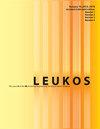Towards a Design Procedure Based on Peoples’ Responses to Indoor Lighting
IF 2.6
2区 工程技术
Q2 CONSTRUCTION & BUILDING TECHNOLOGY
引用次数: 1
Abstract
ABSTRACT On the basis that an effective lighting design procedure should enable practitioners to reliably achieve positive responses from the people who will experience the lighting, the effectiveness of current practice is found lacking in that it is largely unrelated to peoples’ responses. Additionally, the calculation procedures widely used for devising indoor lighting solutions require the user to propose a solution and for the procedure to determine its performance. It is argued that a truly effective procedure would require the practitioner to describe lighting design objectives for the application, and for the procedure to derive the performance specification of a lighting scheme that would achieve the objectives. Evidence of changing attitudes among lighting professionals is identified, which together with recent research findings, has led to a proposal for reassessment of the purpose for which indoor lighting is provided based on peoples’ responses. The Lighting Design Objectives (LiDOs) Procedure is gaining use among professional lighting designers and is used to illustrate practical application of this notion. The implications of such a procedure becoming generally adopted for indoor lighting practice are discussed.基于人们对室内照明反应的设计过程
基于有效的照明设计程序应该使从业者能够可靠地从体验照明的人那里获得积极的反应,当前实践的有效性被发现缺乏,因为它在很大程度上与人们的反应无关。此外,广泛用于设计室内照明解决方案的计算程序要求用户提出解决方案并由该程序确定其性能。有人认为,一个真正有效的程序将要求从业者描述应用程序的照明设计目标,并要求该程序派生出实现目标的照明方案的性能规格。有证据表明,照明专业人员的态度正在发生变化,这与最近的研究结果一起,导致了一项建议,即根据人们的反应重新评估提供室内照明的目的。照明设计目标(LiDOs)程序在专业照明设计师中得到越来越多的使用,并用于说明这一概念的实际应用。讨论了这种程序在室内照明实践中普遍采用的含义。
本文章由计算机程序翻译,如有差异,请以英文原文为准。
求助全文
约1分钟内获得全文
求助全文
来源期刊

Leukos
工程技术-光学
CiteScore
7.60
自引率
5.60%
发文量
19
审稿时长
>12 weeks
期刊介绍:
The Illuminating Engineering Society of North America and our publisher Taylor & Francis make every effort to ensure the accuracy of all the information (the "Content") contained in our publications. However, The Illuminating Engineering Society of North America and our publisher Taylor & Francis, our agents, and our licensors make no representations or warranties whatsoever as to the accuracy, completeness, or suitability for any purpose of the Content. Any opinions and views expressed in this publication are the opinions and views of the authors, and are not the views of or endorsed by The Illuminating Engineering Society of North America and our publisher Taylor & Francis. The accuracy of the Content should not be relied upon and should be independently verified with primary sources of information. The Illuminating Engineering Society of North America and our publisher Taylor & Francis shall not be liable for any losses, actions, claims, proceedings, demands, costs, expenses, damages, and other liabilities whatsoever or howsoever caused arising directly or indirectly in connection with, in relation to, or arising out of the use of the Content. Terms & Conditions of access and use can be found at http://www.tandfonline.com/page/terms-and-conditions .
 求助内容:
求助内容: 应助结果提醒方式:
应助结果提醒方式:


